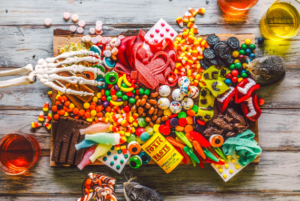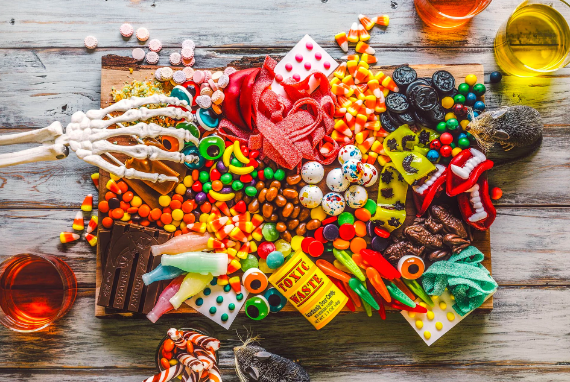It’s that sweet, sweet, time of year again. For children, it means indulging in treats and playing dress-up. For parents, it’s a fall holiday that requires extra vigilance when it comes to food safety. Although most Halloween candy may seem like the ultimate excuse to feed that sweet tooth, it’s extra important to give that candy a thorough examination.

Avoid Sugar Overload
For one, try to avoid having your children snack on treats while they’re out trick-or-treating. Give them a light meal or snack before they head out and urge them to wait until they get home and let you inspect their loot before they eat any of it.
Beware of the Real Monsters… Artificial Colors
And now for the real monsters, an additive found in most foods, artificial color.
Artificial colors are often used to increase the appeal of foods that have little nutritional value. Questions have been raised about the safety of one class of synthetic colors, called FD&C (Food, Drug & Cosmetics) colors, and contaminants in other artificial colorings as well.
Caramel colors III and IV, for example, may be contaminated with 4-methylimidazole (4-MEI), which caused tumors in a National Toxicology Program study (NTP 2004). The European Food Safety Authority has expressed concern about furan contamination, which is also associated with cancer (EFSA 2011b).
There is ongoing debate about the effects of the synthetic FD&C colors on children’s behavior. Some studies have found that mixtures of synthetic colorings and the preservative sodium benzoate were associated with hyperactivity (Bateman 2004; McCann 2007). The European Food Safety Authority concluded that synthetic coloring mixtures may have a “small and statistically significant effect on activity and attention in children,” and that this effect may be an issue for certain sensitive individuals (EFSA 2008a). Other studies have not found an association between hyperactivity and synthetic food coloring (Arnold 2012; EFSA 2008a).
Avoiding artificial colors such as Caramel III and IV can be difficult. Current regulation allows food manufacturers to simply print artificial color on the product label if the ingredient is on an FDA-approved list. But consumers can easily avoid the synthetic colors on FDA’s separate FD&C-certified list because they must be shown on the label with their full or abbreviated name, such as FD&C Yellow 5 or Yellow 5. [2]
We encourage you to try swapping colored treats for dark chocolate and lightly roasted nuts! Nonetheless, The Seekers Centre wishes you and your family a happy & safe Halloween season.
[1] Picture from https://honestlyyum.com/21035/halloween-candy-charcuterie-platter/
[2] https://www.ewg.org/research/ewg-s-dirty-dozen-guide-food-additives

